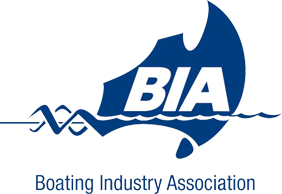Marine Hydraulics and How to Maintain Them
10 March 2023Boats, ships, marine vessels, and others rely on many components to make them operational. Marine engines, for instance, help them move from one port to another. They also take advantage of marine hydraulics.
Marine hydraulics is one of the most utilised power and torque delivery systems in the marine industry. One of the reasons why it is used in the marine industry is it can transfer both linear and rotary forces and torques efficiently, which is commonly used by boats, ships, and others as it can carry out a lot of applications in one go.
Primary Types of Marine Hydraulics
To date, two types of marine hydraulics can be used by the marine industry. These types are open and closed hydraulic systems.
Open hydraulic systems are the most common systems used by ships and others. They take advantage of a pressure-less tank where oil can more or less directly return. One benefit of this type is it has great heat reduction., it also does not contaminate frequently.
Closed hydraulic systems, on the other hand, are systems that allow oil to return directly to the suction side of the pump and doesn’t go back into the tank. They are normally more compact, less expensive, and lightweight. These systems can carry out fine motor motion control.
Marine Hydraulics Key Applications
Tons of applications can be carried out by marine hydraulics. For one, it can be used for rotary and linear operation of cranes, stabilisers, steering, remotely operated valves, doors, and ventilation flaps. It can also conduct rotary operations of winches, furling systems, stern thrusters, and adjustable pitch propellers.
Of course, marine hydraulics can only be functional if it is dimensioned, installed, and commissioned optimally. It should also be maintained accordingly by those who have advanced knowledge of its layout and operation. It should likewise be repaired, dismantled, and assembled without compromising cleanliness and contamination.
Proper Upkeep of Marine Hydraulics
Maintenance is necessary for marine hydraulics as it utilizes a lot of moving parts. These parts include the pump, hoses and lines, cylinders and motors, valves, seals, heat exchanger or cooling unit, reservoir, filters, and hydraulic fluid or oil.
One way to ensure that marine hydraulics components can work optimally for a long time is to subject it to preventative maintenance. Preventative maintenance is a type of upkeep that can keep marine hydraulics running safely and smoothly, ensuring that parts replacement can be avoided. One step of this maintenance is to routinely visually check the marine hydraulics. If there is obvious external damage, it should be repaired right away. Repairs are also necessary if abnormal noises and contamination are present.
Checking the condition of the hydraulic cylinder is also needed to maintain the hydraulics effectively. Any damaged or leaky seals, dents, corrosion or rust and breaks in the rod can cause fluid or pressure to escape, which must not happen at all costs. If this part cannot be repaired anymore, it should be replaced right away.
One more way to maintain your marine hydraulics is to sample the hydraulic oil. Contaminated hydraulic oil or fluid can swiftly cause system failure and operating deficiency. Having it tested by the experts allows the system to be drained and flushed when necessary.
If you need help with marine hydraulics, you can contact us at Riggtech. You can also visit our online store if you need anything.
Optimized by: Netwizard SEO


